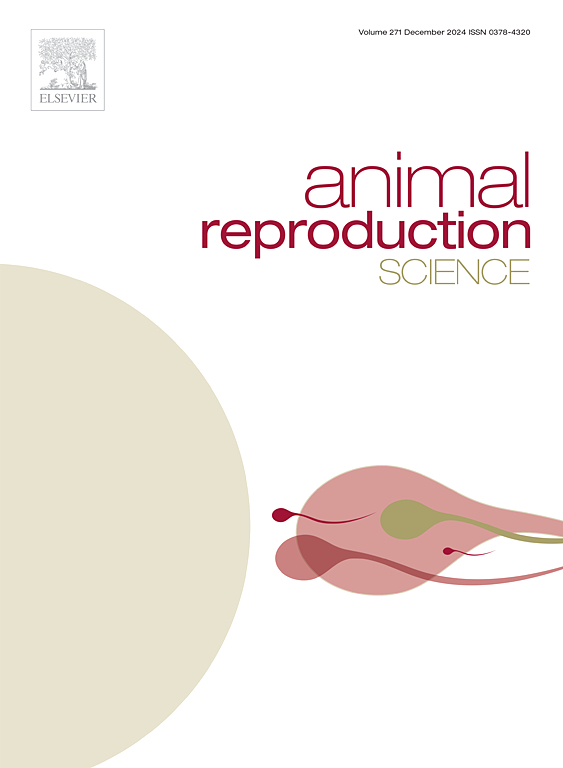Incorporating olive (Olea europaea L) fruit extracts in a tris-based extender improves buffalo semen cryotolerance by reducing oxidative stress
IF 2.2
2区 农林科学
Q1 AGRICULTURE, DAIRY & ANIMAL SCIENCE
引用次数: 0
Abstract
This work aimed to evaluate whether supplementing the freezing extender with olive fruit extract (OFE) would improve the antioxidant defense of buffalo sperm, resulting in improved post-thaw semen quality. Ejaculates (two per 16 Murrah buffalo bulls) were split into four aliquots that were diluted in an extender supplemented with different doses of OFE (0, D50, D100, and D150, based on µM concentrations of hydroxytyrosol, the most represented polyphenol) and frozen according to standard procedures. At thawing, sperm motility, kinetics, viability, acrosome integrity, and membrane functionality were evaluated. Based on the dose-response results, biological antioxidant potential (BAP) and reactive oxygen metabolites (ROMs) were assessed after thawing in D50 and control groups. The pre-freezing supplementation of the extender with D50 OFE showed higher (P < 0.05) total and progressive sperm motility, as well as straight-line velocity compared to the control. Treatment with D50 OFE of buffalo semen also improved (P < 0.01) post-thaw sperm viability, membrane functionality, and acrosome integrity compared to the control. The enrichment of the extender with D50 OFE increased (P < 0.01) the post-thaw BAP and reduced (P < 0.05) the ROMs levels. The highest concentration tested (D150 OFE) negatively affected (P < 0.05) total and progressive motility, and the percentage of sperm with functional membranes and intact acrosomes, compared to the control. In conclusion, low doses of OFE added to the extender significantly improved post-thawing buffalo semen quality by protecting the spermatozoa from cryopreservation-induced oxidative stress. Further studies should investigate its effectiveness on in vivo and in vitro fertility, for potential commercial applications.
求助全文
约1分钟内获得全文
求助全文
来源期刊

Animal Reproduction Science
农林科学-奶制品与动物科学
CiteScore
4.50
自引率
9.10%
发文量
136
审稿时长
54 days
期刊介绍:
Animal Reproduction Science publishes results from studies relating to reproduction and fertility in animals. This includes both fundamental research and applied studies, including management practices that increase our understanding of the biology and manipulation of reproduction. Manuscripts should go into depth in the mechanisms involved in the research reported, rather than a give a mere description of findings. The focus is on animals that are useful to humans including food- and fibre-producing; companion/recreational; captive; and endangered species including zoo animals, but excluding laboratory animals unless the results of the study provide new information that impacts the basic understanding of the biology or manipulation of reproduction.
The journal''s scope includes the study of reproductive physiology and endocrinology, reproductive cycles, natural and artificial control of reproduction, preservation and use of gametes and embryos, pregnancy and parturition, infertility and sterility, diagnostic and therapeutic techniques.
The Editorial Board of Animal Reproduction Science has decided not to publish papers in which there is an exclusive examination of the in vitro development of oocytes and embryos; however, there will be consideration of papers that include in vitro studies where the source of the oocytes and/or development of the embryos beyond the blastocyst stage is part of the experimental design.
 求助内容:
求助内容: 应助结果提醒方式:
应助结果提醒方式:


